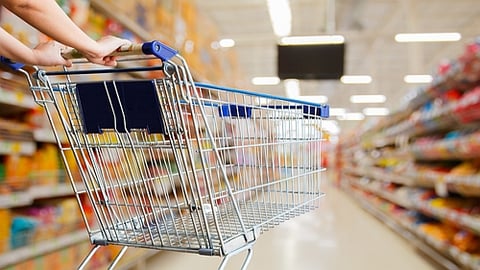How AI Can Be a Game Changer in Markdowns
As resolutions for a new year go, cutting food waste and maintaining profitability in an era of thin margins are right up there for grocers. Fresh departments, in particular, bear a brunt of pressures to move inventory, optimize pricing and help keep products out of landfills.
Artificial intelligence (AI), which is impacting the food retailing business at several different junctures, is being used to achieve these simultaneous objectives. The Stores Consulting Group, based in central Ohio, is one firm delving into that aspect of grocery technology through its partnership with European technology provider Wasteless.
[Read more: "The Grocer’s Guide to Tech"]
According to Rick Marino, managing director for The Stores Consulting Group, the technology can be considered a game changer in fresh merchandising and is currently being tested in a pilot program with an unnamed East Coast grocer. “If you think about improving fresh department profitability, there are core systems you have to have in place first, including a good production planning tool. That has been an important part of the industry for a long time, but now we’re getting to the next level with a holistic solution around fresh that links back-end markdowns that are a massive part of the loss of profitability in fresh,” Marino said in a recent interview with Progressive Grocer.
AI-based technology helps retailers minimize residual items that can turn into waste that is costly from both an environmental and profit standpoint. Marino shares an example. “Say you have too many strip steaks and they are not moving. The system knows it has to have a deeper markdown to move that product. But you may have another product that’s near the end of its life and only needs a 10% reduction if it’s moving fast enough,” he noted. “It is about optimizing price so that it allows product to be sold at the price that makes the most sense – you’re not giving it away and you are making sure that it doesn’t get thrown away. If I can take a dollar off an item and move it, why would I take $5 off to move it?”
In Europe, the Wasteless system is typically used in tandem with electronic shelf labels (ESLs) to give shoppers more information on pricing and to help spur sales. “Using ESLs, you can post the price before a date, so the customer sees the two prices. In addition to keeping the shelf fresher, ESLs save on the supply cost of putting stickers on an item,” Marino pointed out.
The technology can be used in a variety of categories to help retailers get the most out of markdowns. In addition to fresh meats, Wasteless’ system can be deployed for fruits, vegetables, deli prepared meals and salads.
As for bottom-line results, this form of dynamic pricing has been shown to reduce food waste by 50%, boost revenues by 20% and bump up net margins by 3%, Marino reported. So far, he added, the Wasteless pilot program with the U.S. grocer is going well, as that store operator is using it for 120 SKUs with plans to expand to 300 more. “A population between 800 and 1,200 SKUs per store is the sweet spot,” he shared.






